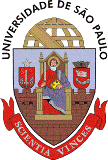Day 1 :
Keynote Forum
Jilong Shen
Anhui Medical University,China
Keynote: Genotype and virulence of Toxoplasma gondii dominantly prevalent in China
Time : 09:30-09:55

Biography:
Jilong Shen completed his PhD from Sun Yet-sen University School of Medicine of China in 1990 and studied as a visiting scholar at Teikyo University School of Medicine of Japan and at Case Western Reserve University School of Medicine of USA successively. He is the director of the Key Laboratory of Zoonoses and the Key Laboratory of Pathogen Biology of Anhui province. He has published more than 150 papers and currently works on the genotype-associated pathogenesis of Toxoplasma gondii.
Abstract:
Toxoplasma gondii is an obligatory intracellular protozoon capable of infecting a wide range of mammalian hosts including humans. It has been found that European and North American strains of the parasite show a clonal population structure with three distinct lineages(types I, II, and III) while strains isolated from animals and humans in South America present a high genetic diversity. The strains with these genotypes differ in virulence and in distinct host response due to the effectors polymorphisms of ROP16 and GRA15. We collected 59 strains of T. gondii from stray cats, free-range chicken, and pork in retail meat stores. The PCR-RFLP at 9 loci and microsatellite typing at 15 markers were used for genotyping; finally, seven genotypes were identified (type I, type II, ToxoDB#9, #203, #205, #213, and #215). We also found that the majority of isolates from both animals and humans (the cancer patients with a long term of chemotherapy) belong to type Chinese 1 (ToxoDB#9), acounting for 74.58%(44/59). Phenotypical examinations indicated a significantly different virulence in mice and parasite proliferation in cultures cells among the isolates with Chinese 1. Additionally, sequencing of effectors ROP16 and GRA 15 demonstrated that strains of Chinese 1 with different virulence share the ROP16I/III polymorphysm with type I/III and GRA15II with type II. Our results suggest that the genetic markers currently used for genotyping failed to identify the virulence of strains with Chinese 1, and it may have the pathogenesis different from that of the archetypal strains in European and North America.
Keynote Forum
Daniel FrÃas Lasserre
Metropolitan University of Educational Sciences, Chile
Keynote: The genus Mepraia Mazza, Gajardo & Jörg (Hemiptera: Reduviidae) in Chile: Morphological, Genetic and Ecological Differentiation of its species
Time : 09:55-10:20

Biography:
Daniel Frías Lasserre has completed his Doctorate at the age of 36 years from University of Chile. Subsequently made improvement and research stays at the Smithsonian Institution in Washington DC, USA and in the University of Sao Paulo Brazil. He is past president of the Genetics Society of Chile and the Chilean Society of Entomology. He was Director of the Institute of Entomology and Director of Research of the Metropolitan University of Educational Sciences. He has published more than 48 papers in reputed journals, 2 books, 22 chapters of books and has been serving as an editorial board member of Chilean Journal of Agricultural Research.
Abstract:
In Chile, there are three endemic species of the genus Mepraia vectors of Trypanosoma cruzi, the causal agent of Chagas disease. In all these species, females are always wingless, but males can be winged or wingless according to species. The males of M. gajardoi they are always brachypterous. Males of M. parapatrica are braquipterous and macropterous and males of M. spinolai are macropterous, and also micropterous. Chromosome studies indicate that genes that govern the thoracic development and the development of the wings are located on the Y chromosome. A break of this holocentric chromosome would have giving rise to a Neo Y without the genetic information necessary to complete the development of the thorax and wings. This genomic event would explain the emergence of wingless males in M. spinolai. These species have a clinal distribution from north to south of Chile. This suggest a parapatric model of speciation. Thus, M. gajardoi is distributed in the coastal area of the regions XV and II of northern Chile. This is principally a sylvatic species that lives associated with seabirds, lizards, and wild rodents. M. parapatrica is distributed in the coastal area in region III and in the southern border the region II and also is associated with seabirds but also invades peridomestic habitats. M. spinolai distributed in interior valleys of Regions III, IV, V and in rural areas of Metropolitan region. This specie feeds mainly on small sylvatic mammals, invades the peridomestic habitats and also invades the human houses, especially in rural areas increasing the chances that these insects transmit T. cruzi to humans. In M. spinolai the frequency of micropterous and macropterous males depends according to the habitat where this species occurs. So in wild populations of Metropolitan region (Til-Til and Colina), the frequency of micropterous males is higher than in macropterous males. In contrast, in peridomestic habitat of region IV (Combarbalá), associated with goat pens, the frequency of macropterous males is greater than the frequency of micropterous males. Morphological analysis from the individuals of the collection of Institute of Entomology shows that the males collected inside of human houses in the Metropolitan region (Til-Til) and region IV (Combarbalá and Ovalle) indicates that are all macropterous. Similarly, male specimens were collected in 2012, 2013 and 2014 inside human habitation by staff of the Ministry of Health in the Region Metropolitan Region (TIL-Til), and also in Regions V, IV and III. These data show that from a total of 540 adults collected inside houses, 86.9 % are males winged and only 13.1 % are wingless (0.9 % are males micropterous and 12.2% females). The micropterous males are found almost exclusively in wild populations. This indicates a disruptive selection where the winged males migrate into human habitations and micropterous males remain in the wild populations. This situation is probably due to that the presence of wings implies a greater accumulation of heat, acting as a greenhouse effect. For this reason the winged males they go in search of cooler places inside houses where to take refuge and also can feed on blood human or domestic animals.
Keynote Forum
Yehia Otify
Alexandria University, Egypt
Keynote: MCR (Movable Computer Ruler): A new method for measuring the dimensions of parasite, particles and other objects using optical microscope and the digital images
Time : 10:20-10:45

Biography:
Yehia Otify has completed his Bachelor of Veterinary Medical Science from Cairo University and his PhD from Alexandria University, Egypt. He did his Postdoctoral short visit at Ontario Veterinary College. He has been the Faculty of Veterinary Medicine in both Edinburgh and Glasgow Universities. He is the former Dean of the Faculty of Veterinary Medicine, Alexandria University and Group Leader of an international collaborated project (VMERGE). He has published 34 papers and is the author of Veterinary Parasitology (Arabic language text, 2011).
Abstract:
Parasite measurements could have been done with different programs, most of these programs applied while using optical microscope. They take more effort specially eyes attentiveness and that could consume more time and energy. A new method for measuring the size and different body dimensions of parasites, particles and other objects using optical microscope is available. It was developed using a specifically designed movable computer ruler (MCR) derived from digital images of a stage micrometer. Subsequently, MCR can be superimposed on images of parasites to measure their dimensions in microns. MCR derived from the stage micrometer under a particular objective lens can be used to measure the bodies’ dimension of an object acquired by the same lens/microscope/camera system and the widely known Microsoft PowerPoint and MS Picture Manager programs. The user will be able to design his own MCR on his PC for each objective lens, e.g. MCRx4 to MCRx100, using each on the corresponding digital image taken by the same objective lens. The conditions are fixed for every superimposed image including width, height, pixel number and density. The MCR was tested using selected parasites, and shown to be as accurate as the ocular micrometer disc, screw micrometer eyepiece and image analysis software. Scale bar also will be easily created and attached to the image. The lower technical complexity and the precise measurements with MCR method makes it applicable even in laboratories with limited resources.
- Track 1: Parasitology: Overview
Track 2: Medical Parasitology
Track 3: Animal Modelling & Veterinary Parasitology

Chair
Geoff Hide
University of Salford, UK

Co-Chair
Luiz Euribel Prestes Carneiro
Oeste Paulista University, Brazil
Session Introduction
Luiz Euribel Prestes-Carneiro
Oeste Paulista University, Brazil
Title: The role of environment in the spreading of Visceral Leishmaniasis in western Sao Paulo, Brazil
Time : 11:00-11:20

Biography:
Luiz Euribel Prestes-Carneiro was born in Paraná State, Brazil. He graduated with a degree in Pharmacy and Biochemistry by the State University of Ponta Grossa, and Medicine by the University of Oeste Paulista, Sao Paulo. In 1999 he obtained his Master’s degree in Molecular and Cellular Biology at Maringa State University, and in 2003 his PhD degree in Immunology at São Paulo University, São Paulo. He did his Residency course in Infectious Diseases at the Ipiranga Hospital, Sao Paulo. Since 1995 he has been a professor at the Immunology Department, an institutional researcher, and a professor of the Environment Master’s course at Oeste Paulista University, Presidente Prudente, Sao Paulo. He is part of the editorial board of 2 Brazilian Scientific Journals, 4 International Scientific Journals and reviews for many other journals. He has published 20 papers in peer reviewed journals. At present he works in infectious diseases and immunodeficiencies clinics of two public hospitals in Presidente Prudente, Sao Paulo. Currently Dr. Prestes-Carneiro’s researches are focused on the epidemiological and immunological aspects of HIV, Viral Hepatitis, Visceral leishmaniasis and Immunodeficiencies.
Abstract:
Brazil harbors 90% of the Visceral Leishmaniasis (VL) reported cases in Latin America. We described the role of environment in the fast and worrying spread of VL in western Sao Paulo state, Brazil. Coming to Brazil from Bolivia through the Novoeste railway, Marechal Rondon highway (SP-300) and Bolivia-Brazil pipeline construction (GASBOL), the disease arrived at the border of the west region in 2006 through Mato Grosso do Sul (MS) state. We hypothesize that the primary axis of VL dissemination through the west was the SP-563 highway, coming from endemic regions of MS and throughout the whole region, crowded of small and middle cities and connected by a large number of highways (1,480 miles). By 2013, from the 45 municipalities that comprise the region, 30 (66.7%), has reported the sand-fly, 18 (40%), canine leishmaniasis and 14 (31.1%), human VL, 348 human reported cases and 19 deaths (2005-2013). It is considered the poorest region of the state with sandy/dry soil in the winter and rainy/wet soil in the summer, with increasing temperatures in the last decades. Nevertheless, the framework of VL dissemination could be aggravated by the extensive amount of watersheds flowing into Paraná, Paranapanema and Tietê, the three biggest rivers of southwestern and southern Brazil, with nine big lakes and a flooded area of 2,384 square miles, supporting nine hydroelectric plants and bridges. Poverty, tropical climate, extensive highway network, artificial big lakes linking endemic regions may endorse environment factors related to the spreading of VL in western Sao Paulo state.
Sonia AlmerÃa
Universitat Autònoma de Barcelona, Spain
Title: Bovine Neosporosis. Epidemiology and markers of risk of abortion from a clinical perspective
Time : 11:20-11:40

Biography:
Sonia Almería, D.V.M., Ph.D., obtained both D.V.M and and Ph.D. degrees at the Veterinary School of the University of Zaragoza, Spain. She completed postdoctoral fellowship training in immunoparasitology at the Agriculture Research Service (ARS), USDA, in Beltsville, MD, USA. She is an Associate Professor of Parasitology in the Veterinary School of the Autonomous University of Barcelona (UAB) and a Research Associate in the Center for Research in Animal Health (CReSA-IRTA) in Barcelona, in Spain. She has published more than 80papers in reputed journals and has been serving as an editorial board member of Research in Veterinary Science since 2010.
Abstract:
Neospora caninum is a protozoan parasite closely related to Toxoplasma gondii with a wide host range but with a preference for cattle and dogs. Since the description of N. caninum as a new genus and species in 1988, bovine neosporosis has become a disease of international concern as it is today a leading cause of abortion in cattle worldwide, yet it remains unclear why not all infected cows abort. At present there is no effective treatment or vaccine. Epidemiological and clinical data from the cattle herds need to be considered. Importantly, the selective use of semen from beef breeds, mainly Limousin, in seropositive dairy cows has been linked to a very low incidence of abortion. This has an important practical aspect which not only reduces the risk of replacements from Neospora-infected heifers, but also reduces the risk of abortion. In order to increase the sensitivity of a positive diagnosis of N. caninum-associated abortion, the use of more than one technique is recommended. The markers used to diagnose the disease and, more importantly, to assess the risk of abortion in infected cows, including those based on specific antibodies, antibody titers and antibody subtypes, along with cellular immunological markers, hormones and other pregnancy-related proteins will be described. The identification of parasite molecules specific to aborting cows could provide insight into mechanisms of parasite-associated abortion and help control this devastating disease. The final result of our bovine neosporosis control programs has been an acceptably reduced effect on the abortion rate from this disease.
Stefaan Kurvers
Zuyderland Medical Centre, The Netherlands
Title: Strongyloides stercoralis, a silent killer- A case-report
Time : 11:40-12:00

Biography:
Stefaan Kurvers has completed his Bachelor at the age of 20 years from Hogeschool Zyud at Heerlen, The Netherlands. He is a lab-technician microbiology and coordinating lab-technician parasitology at Zuyderland Medical Centre, The Netherlands. He is a member of the Dutch Society of Parasitology.
Abstract:
A 57 year old male patient suffering from non-Hodgkin lymphoma (NHL) was hospitalised due to general weakness and abdominal complaints. Symptoms included headache, diarrhoea, vomiting, nausea and fever. Primarily the attending physician suspected deterioration due to NHL. However, extensive diagnostic examinations showed no cause for his abdominal complaints. Finally, at day 14 a gastroscopy was performed showing two ulcerative lesions (one in the fundus, one in the cardium) from which biopsies were taken and sent to the pathology department. These biopsies showed a pronounced eosinophilia and the presence of worm/larvae like structures upon which the department of Medical Microbiology was consulted. On suspicion of a Strongyloides stercoralis infection, stool samples were collected two days after the biopsy and examined for parasites. Larvae of Strongyloides stercoralis were found. Unfortunately, before the parasitological diagnosis was made, the patient deteriorated. He was admitted to the intensive care unit where mechanical ventilation, ivermectin and broad-spectrum antibiotics were started. One day after the diagnosis was confirmed the patient died of septicaemia combined with massive bleeding from the stomach ulcera. In retrospect the patient was originally from Liberia, during his treatment for NHL with chemotherapeutic agents strongyloides serology was never performed. One month previous to this final hospital admission he had also been admitted with respiratory and abdominal complaints which were treated with broad spectrum antibiotics and prednisone. Furthermore his medical history revealed type II diabetes, chronic hepatitis B infection.
Conclusion: Hyperinfection with Strongyloides stercoralis.
Geoff Hide
University of Salford, UK
Title: Does vertical transmission play a role in the generating the high prevalence and ubiquity of Toxoplasma gondii in natural populations of humans and animals?
Time : 12:00-12:20

Biography:
Professor Geoff Hide is currently Professor of Parasitology at the University of Salford in the UK. He received his Ph.D. degree in Molecular Parasitology from the University of Edinburgh (1988) and conducted postdoctoral research at the Wellcome Trust Centre for Molecular Parasitology at the University of Glasgow.
Abstract:
With a ubiquitous dispersion and high prevalence in natural populations of animals and humans, the distribution of the parasite Toxoplasma gondii is puzzling. Despite the cat being the only definitive host, Toxoplasma is found in most geographical areas and all warm blooded animals. Three routes of transmission are typically recognised: ingestion of oocysts shed by the cat, carnivory and congenital transmission. The relative importance of these routes is poorly understood in natural populations. These studies aim to assess the contribution of congenital/vertical transmission to these processes. Using PCR detection of the parasite in foetuses, overall congenital transmission rates in natural populations of infected mice were found to be high (Mus domesticus, 100%; Apodemus sylvaticus, 100%). Studies in lambs, using PCR detection of Toxoplasma in umbilical cord tissue at birth, showed that congenital transmission occurred in 69% of pregnancies. Infection and abortion in families of pedigree sheep from the same farm was investigated to test the hypothesis if vertical transmission: if infection occurred by ingestion of oocysts, a random distribution of infection across families would be expected. We found highly significantly different prevalences of Toxoplasma infection (P<0.01) and abortion (P<0.01) in different families. Furthermore, analysis of pedigrees suggested serial congenital infection from some infected ewes. In humans, we found 9.93% congenital transmission rates using PCR amplification of parasite DNA from umbilical cord. This is much higher than previously published data. However, this study, showed no link between infection and miscarriage in humans. We propose that vertical transmission may be much more important than previously thought, may contribute to the high prevalences seen in natural populations of mammals (including humans) and deserves further consideration.
Weidong Peng
Nanchang University, China
Title: Pig Ascaris: An important source of human ascariasis in China

Biography:
Prof Weidong Peng, completed his MD in 1983 from Jiangxi Medical College, China and postdoctoral researches at University of Glasgow, UK. He has published more than 60 papers in international reputed journals and in Chinese national academic journals.
Abstract:
The aim of the present study is to detect the frequency and distribution of cross infection and hybridization of human and pig Ascaris in China. Twenty high polymorphic microsatellite loci were selected to screen 258 Ascaris worms from humans and pigs from 6 provinces in China. The software programs STRUCTURE, BAPS and NEWHYBRIDS were used to determine the case of cross infection and hybridization of human and pig Ascaris. Results showed that cross infection was detected in all sampled locations and of the total 20 cross infection cases, 19 were identified as human infections by pure-bred pig type Ascaris in contrast to only one case of pig infection by pure-bred human type Ascaris. Similar to the findings in cross infection, hybrid Ascaris was also detected in all locations and both host species and most of hybrids (95%) were detected from human host. The distribution of cross infection and hybrids showed significant difference between the two host species and among three categories of genotype in terms of G1, G2 and G3, and also between the south and north regions (for hybrids only). The results strongly suggest pig Ascaris as an important source of human ascariasis in endemic area where both human and pig Ascaris exist. In consideration of current control measures for human ascariasis targeting only infected people, it is urgently needed to revise current control measures by adding a simultaneous treatment to infected pigs in the sympatric endemics. The results are important for public health, and enlightening on the understanding of genetic evolution, taxonomy and molecular epidemiology of Ascaris.
Zhong-Dao Wu
Sun Yat-sen University, China
Title: The pathogenesis of optic neuritis caused by Angiostrongylus cantonensis in SD rats and BALB/c mice

Biography:
Zhong-Dao Wu has completed his PhD in 1997 in the Nanjing Medical University in China and master studies at the Jiangxi Medical Collage in China. He is a Full-Professor and the Chief of Department of Parasitology, Zhongshan School of Medicine in Sun Yat-sen University. He has published more than 40 papers in reputed journals.
Abstract:
It has been documented that infection with Angiostrongyliasis cantonensis can cause optic neuritis and lead to serious vision sequela however no systematic studies have been conducted in this area. We applied rats and mice with A. cantonensis infection as animal model to study the pathogenesis of optic neuritis caused by the infection. The SD rats and BALB/c mice were infected AC for 7d, 14d and 21d, respectively, then histological examination of retina and optic nerve, ophthalmoscope and ERG, VEP of experimental animals were applied. After that, dexamethasone combining with albendazole and tribendimidine (TBD) was used to treat the optic neuritis in rats and mice caused by AC respectively, and the therapy effects were evaluated. Our results showed obvious eosinophils (EOS) infiltration appeared in retina and optic nerve adventitia followed with obvious optic nerve fibers demyelination, retina ganglion cells swelling even death in infected rats and mice when applying histology observation. Moreover, optic disk of experimental rats appears hyperemia, retina vein became thicken and VEP latency prolonged; mice showed prolonged VEP latency and decreased ERG amplitude. In therapy process, the results showed dexamethasone combining with albendazole had no obvious effect to prevent progressive visual deterioration for optic neuritis caused by A. cantonensis in rats; tribendimidine can alleviate retinal and optic nerve inflammation, but can not improve VEP latency and ERG amplitude. Above results provided evidence that A. cantonensis really can cause optic neuritis and appear optic nerve demyelination and ganglion cell damaged with EOS infiltration and current therapy method have no distinct effect on vision recovery, which suggests us take consideration of protecting and nourishing optic nerve and ganglion cells in time to avoid of their in secondary injury may be necessary when treating infected patients. This measure may lessen serious ocular region sequela such as hypopsia even loss of vision.
Hanem F. Khater
Benha University, Egypt
Title: Efficacy of synbiotic and diclazuril and their combination on the performance of broilers infected with Eimeria acervulina
Time : 12:20-12:40

Biography:
Hanem Khater is the Professor of Parasitology in Benha University, Egypt. She completed her doctoral degree at the Department of Entomology, College of Agriculture, food and Natural resources, University of Missouri- Columbia, USA. Her research mainly focused on natural control of arthropods of medical and veterinary importance such as mosquitoes, house flies, lice, green bottle fly, camel nasal botfly, soft and hard ticks, and mite to avoid environmental pollution with pesticides as well as control of several parasites using safe and natural materials to avoid drug resistances and environmental contamination.
Abstract:
The efficacy of synbiotic (a combination of probiotic and prebiotic) with and without diclazuril on Eimeria acervulina on growth and associated biochemical variables was investigated in broiler chickens. One-day-old chicks were divided into 5 equal groups (Gps) of 30 chicks each. Gp 1, negative control, was not infected and not treated. Chicks of the other groups were directly inoculated intra-crop with 1x105 sporulated oocysts of E. acervulina on the 8th day of age. Gp 2, the positive control, was infected and not treated. Chicks in the remaining groups were given diets mixed with the tested drugs for 6 successive weeks. Gp 3 was fed on a diet mixed with diclazuril (1 ppm). Gp 4 was given a diet mixed with synbiotic (Clostat HC SP Dry®, containing a probiotic, Bacillus subtilis 2x 108 CFU/gm and a prebiotic, Lactose 99.8%) (1 kg/ton feed). Gp 5 was fed on a diet mixed with both diclazuril (1 ppm) and synbiotic (1 kg/ton). Our findings revealed that birds in symbiotic- treated groups, Gps 4 and 5, showed superior reduction in the mean oocyst counts and lesion scores and improved growth and biochemical variables. It was concluded that synbiotic supplementation enhanced growth and production of healthy broilers and could be used as a worthwhile and stand-alone supplement in broiler diets instead of growth promoters and anticoccidial drugs.
Liang Wu
Jiangsu University, China
Title: Toxoplasma gondii nucleus coding apicoplast protein ACP synthesis and trafficking in delayed death
Time : 12:40-13:00

Biography:
Liang Wu has completed his MD, PhD at the age of 29 years from Jiangsu University, and working in School of Medicine Jiangsu University. He has published more than 30 papers in reputed journals including 5 SCI papers.
Abstract:
To explore Toxoplasma gondii nucleus coding apicoplast protein ACP synthesis and trafficking in delayed death. The recombinant T. gondii ACP was expressed by prokaryotic expression method, and anti-ACP polyclonal antibody was obtained from rabbit immune. T. gondii “delayed death†was induced by clindamycin, and ACP transcription was determined by Real-time PCR assay. The expression of ACP with transit type and mature type was determined by Western blotting with anti-ACP polyclonal antibody. The mutant expressed ACP fused with GFP tag was constructed by pHX-ACP-GFP. The distribution of ACP in “delayed death†was observed by ACP-GFP fusion protein with Confocal Microscope. T. gondii ACP transcription and t-ACP expression had no significant decrease in the early 4 h of “delayed deathâ€, but there has been a significant decrease in 6 h. The expression of m-ACP had a significant decrease in 4 h which occured earlier than t-ACP expression. The number of brightly dot green fluorescence in ACP-GFP mutant decreased with prolonged time. There was very little brightly dot green fluorescence in ACP-GFP mutant when treated with clindamycin for 6 h. Clindamycin could suppress apicoplast proliferation and induce T. gondii “delayed deathâ€, however it could not directly suppress nucleus coding ACP transcription and expression. T. gondii lacking of apicoplast had a barrier of transit peptide cleavage and t-ACP could not be transformed into m-ACP. The reason for the decrease in ACP expression could be due to excessive t-ACP synthesis in tachyzoites resulting in a negative feedback for the ACP coding gene transcription.
Tingbao Yang
Sun Yat-sen University, China
Title: Phylogeographies of Angiostrongylus cantonensis and its host Achatina fulica in China
Time : 12:40-13:00

Biography:
Tingbao Yang completed his Ph.D from Sun Yat-sen University in 1991. He has been working on fish parasitology for more than 25 years and published more than 80 relevant papers, mainly international peer-reviewed journals. He is now professor and Vice-Director of the Institute of Aquatic Economic Animals in the School of Sun Yat-sen University, China.
Abstract:
The giant African snail Achatina fulica and its nematode Angiostrongylus cantonensis are mainly found in Southern China areas including Taiwan. In the present study, the phylogeographies of A. fulica and its nematode A. cantonensis in South China (including Taiwan) were investigated.Based on the mt Cytb and ND2 sequences, phylogeographical pattern of the giant African snail (Achatina fulica) in the South China (including Taiwan) showed that all local populations vary in the genetic diversity, the Kaohsiung (KH) population in Taiwan exhibited relatively high level of genetic diversity based on both Cytb and ND2 sequences. Analyses of both molecular variance (AMOVA) and pairwise FST detected no significant population genetic structure among populations. Neutrality tests revealed that A. fulica might have undergone population expansion. The results of the median joining network (MJN) showed two not distinct lineages, the greater one contained the haplotypes from all populations, the other merely included haplotypes from Taiwan, which is different from the topology of the neighbor-joining trees. We suggested that the original populations invading Taiwan was a mixture of two or more different populations, but only one of them was afterwards brought to Mainland China. Based on whole sequences of the mitochondrial cytochrome b (Cytb) of 496 individuals and NADH dehydrogenase subunit 2 (ND2) of 498 individuals of Angiostrongylus cantonensis obtained from 12 localities in South China, relatively low genetic diversities were detected for all local populations except for that from Hekou (HK) in Yunnan Province. The analyses of molecular variance (AMOVA) and FST detected instinct population genetic structure between Hekou (HK) population and each of other populations, which consists with the result of exact test of differentiation. The phylogenetic trees based on the sequences of ND2 and Cytb showed 2 (based on ND2) or 3 (based on Cytb) major lineages respectively, with obvious geographical relevance (HK and HKW). Among other populations than HK, there also existed a certain degree of genetic differentiation between those from south China and Taiwan. Both neutrality tests and mismatch distribution revealed that A. cantonensis did not undergo population expansion. We suggested that southwest border regions of China is the origin or one of the origins of A. cantonensis in China.
Ahmet Özer
Sinop University, Turkey
Title: Assessment of endemic toothcarp (aphanius danfordii) and invasive mosquitofish (gambusia holbrooki) health by means of relative condition factor under the co-infection of different parasite groups and revelation of the effects on their competitive interactions
Time : 14:00-14:20

Biography:
Ahmet Özer has completed his PhD in 1999 at the Institute of Aquaculture in Stirling University in Scotland and postdoctoral studies at the Sinop University Faculty of Fisheries and Aquatic Sciences in Turkey. He is a Full-Professor and the Head of Aquaculture and Diseases Department at the same faculty. He has published more than 38 papers in reputed journals, made 14 oral and 35 poster presentations at international symposiums and has been serving as a Member of the board of management of the Faculty of Fisheries and Aquatic Sciences.
Abstract:
The objectives of the present study were to investigate the parasite fauna of endemic toothcarp Aphanius danfordii (Boulenger, 1890) and invasive mosquitofish Gambusia holbrooki Girard, 1859 sharing the same ecological environment, to assess the effects of different parasite group’s co-infections on the relative condition factor of both fish species and to reveal the effects on their competitive interactions. Totally 125 Aphanius danfordii and 227 Gambusia holbrooki were collected by means of electro-fishing in the Lower Kızılırmak Delta in Samsun, Turkey during the period from December 2011 to November 2012 and examined for parasites using conventional methods. Smears of skin, fins, gills, eyes, kidney, liver and gastrointestinal system of fish were screened under light microscopy, parasite species were identified, counted and photographed using a phase contrast microscope equipped with a digital camera. Identified parasites were grouped within higher taxonomic position and their infection indices were calculated. For statistical analysis, the weight-length relationship (WLR) curves for both fish species were estimated by means of robust regression methods so as to avoid the effect of influential measurements. The condition, fatness or well-being of fish, was assessed utilizing the relative condition factor (Kn) which is the ratio of the observed weight of the expected weight. The variations of Kn with the seasons, parasite loads (number of parasites on the host), observed different parasite groups and co-infection of those were then analysed by comparing the mean (Kn) values to the standard value (Kn=1) using the student-t test. Moreover, current competitive interactions between both species sharing the same environment were explored comparatively for health assessment. A total of 20 parasites species were identified belonging to Protozoa (6 species), Monogenea (2 species), Digenea (5 species), Nematoda (3 species), Acanthocephala (1 species), Cestoda (1 species) and Copepoda (2 species) in toothcarp. On the other hand, mosquitofish were found to be infected by 10 parasite species belonging to Protozoa (2 species), Monogenea (1 species), Digenea (5 species), Nematoda (1 species) and Cestoda (1 species). In toothcarp, infection prevalence (%) and mean intensity values were 58.2%, 372.5±98.5 for Protozoa; 29.6%, 4.3±0.7 for Monogenea; 99.2%, 93.3±13.6 for Digenea; 8.8%, 1.6±0.3 for Nematoda; 4%, 1.0±0.0 for Acanthocephala; 0.8%, 1.0±0.0 for Cestoda and 10.4%, 2.0±0.3 for Copepoda, respectively. All the toothcarp collected were infected by the individual or a combination of these groups. On the other hand, the same measures in mosquitofish were 8.3%, 7.1±4.2 for Protozoa; 0.4%, 1.0±0.0 for Monogenea; 69.6%, 15.1±2.8 for Digenea; 10.1%, 5.7±1.4 for Nematoda and 10.6%, 2.0±0.3 for Cestoda, respectively. Amongst the all, 52 mosquitofish were observed not parasitized. Individual or co-infection of different parasite groups for both fish revealed no adverse effect on their health. However, negative influence of seasons on the toothcarp was detected, especially in autumn and spring, for which relative condition factor of toothcarp was found to be smaller than that of mosquitofish. Although the parasite load was observed to be higher in toothcarp than mosquitofish, mean (Kn) values for each number of parasite load were observed to be equal to a standard value of “1”. When the effect of parasite load was, however interacted with the season, the weight of toothcarp seemed to decrease as the number of parasites on the host increased for all seasons except for summer. According to the data obtained throughout this research study, possible interactions between endemic and invasive fish species related to infection indices, parasite loads and health status of both fish species were revealed and discussed in detail.
Mauro Javier Cortez Veliz
University of Sao Paulo, Brazil
Title: Role of the CD200-CD200R interaction in infection of macrophages by Leishmania
Time : 14:20-14:40

Biography:
Mauro Javier Cortez obtained his biomedical degree at University of Antofagasta, Chile, in 2000. He went to Sao Paulo, Brazil to pursue a doctorate, which he obtained in 2004. He worked as a postdoc at Federal University of Sao Paulo at the Microbiology and Immunology Department, until 2007. He arrived at the Department of Microbial Pathogenesis in Yale University and then moved to the Department of Cell Biology & Molecular Genetics at the University of Maryland, until 2011. In 2011, he returned to Brazil to work as assistant professor, at The University of Sao Paulo, working in the Leishmania model.
Abstract:
There are numerous gaps in our knowledge about the strategies used by Leishmania species to survive in the harsh environment of the phagolysosome of macrophages and modulate the host immune response. The aim of the proposed study is to investigate the molecules induced in bone marrow macrophages (BMM) in response to infection with Leishmania and its association with the inhibition of anti-parasitic response. In particular, our interest focus on factors that modulate the expression of CD200 and its receptor (CD200R), molecules induced after infection with amastigotes of Leishmania (Leishmania) amazonensis and inhibited the activation of iNOS pathway in macrophages. Our hypothesis is that the parasites stimulate the expression of CD200 through activation of Toll-like receptors (TLRs). We will investigate the signaling pathways involved in parasite recognition by specific TLRs and its association with expression of CD200 in infection with Leishmania in vitro and in vivo. Moreover, we will investigate the potential role of CD200 in the biogenesis of the vacuole parasitophorous, which is essential for parasite resistance and growth in macrophages. The successful completion of the studies will promote important informations regarding the biology of the infection by Leishmania species and a potential new target for therapeutic applications.
Sheikh Tanveer Salam
Amar Singh College, India
Title: Prevalence and Pathology of Heterakis gallinarum in Free Roaming Domestic Chicken of Kashmir Valley
Time : 14:40-15:00

Biography:
Sheikh Tanveer Salam completed his PhD at the age of 28 years from University of Kashmir on September 2008 and carried out postdoctoral studies from Post Graduate Institute of Medical Education and Research (PGIMER). He Joined J & K Higher Education Department on 1st May 2010 as Assistant Professor and was posted at A.S. College Srinagar. He has published more than 12 research papers in various journals of national and international repute having impressive impact factors. Besides this he has presented many research papers in various national and international conferences. He has also organized many national level seminars and conferences at his institute of posting.
Abstract:
The present research work was carried out for a period of two years from January 2012 to December 2013 on a sample size of 478 free ranging domestic fowl collected from different localities of Kashmir valley. The study revealed occurrence rates of Heterakis gallinarum for the 1st and 2nd year of study and an overall prevalence rates were found to be 3.43% (8/233), 5.3% (13/245) & 4.39% (21/478). Mean intensity of infection for the nematode was observed to be 20 ± 2.1. Heterakis gallinarum occurred free in the lumen of caecum especially at the blind end. The caecal wall was thickened and revealed petecial haemorrhages. Histopathological studies of mucosa revealed degeneration of mucosa and glandular distortion. Multiple erosion foci together with parasite and cellular debris were evident. Parasite sections and eggs were observed in the lumen which was full of cellular debris. Cellular reaction was diffuse in the mucosa and submucosa and was characterized by leukocytes and heterophils. Nodular aggregation of mononuclear cells was also observed. Toludine blue stained sections revealed presence of mast cells in the submucosa and mucosa.
Samar N. Beshbishi
Mansoura University, Egypt
Title: Identification of the antimalarial artemisinin-naphthoquine phosphate as effective therapeutic combination against Schistosoma haematobium
Time : 15:00-15:20

Biography:
Samar N. El-Beshbishi has completed here PhD from Faculty of Medicine, Mansoura University, Egypt and postdoctoral studies from University of Texas Medical Branch, Galveston, Texas-USA. She is professor of Medical Parasitology, Faculty of Medicine, Mansoura University, Egypt. She has published more than 25 papers in reputed journals and has been serving as an editorial board member and reviewer of repute.
Abstract:
Schistosomiasis is a parasitic disease of public health significance in tropical and subtropical regions. Schistosoma haematobium- and S. mansoni-endemic areas are largely overlapped. As, praziquantel is the drug of choice against all human schistosomes, drug resistance is a disquiet. Artemisinin-naphthoquine phosphate combination (CO-ArNp), which is one of the artemisinin-based combination therapy recommended by the WHO as a gold standard treatment for malaria, was recently reported to be a promising therapy against S. mansoni. In this work, we assessed the in vitro activity of CO-ArNp on adult S. haematobium, and examined tegumental alterations by means of scanning electron microscopy (SEM), to detect if this drug combination has a broad spectrum antischistosomal effect. Worms were incubated using CO-ArNp over a concentration range of 1–40 µg /ml. Exposure of adult S. haematobium for 24 h to a medium containing 20 μg/ml CO-ArNp reduced worm motor activity, induced tegumental alterations within 48 h, and killed all worms within 72 h. SEM observations revealed extensive tegumental changes, including swelling, shrinking, perforation and sloughing with exposure of the subtegumental tissues, particularly on the tegument of male worms. Our results, along with the well known good pharmacokinetics and safety of CO-ArNp, may potentiate the use of this novel broad-spectrum antischistosomal drug candidate in overlapping endemic areas.
Jinling Chen
Nantong University, China
Title: The possible molecular mechanisms that Schistosoma japonicum soluble egg antigens reverse fibrosis
Time : 15:20-15:40

Biography:
Jinling Chen has completed her PhD at the age of 35 years from Nanjing Medical University (NJMU), Nanjing, Jiangsu, China. She is a Associate Professor of Nantong University School of Medicine.
Abstract:
Hepatic stellate cells play a key role in the development of hepatic fibrosis. Activated hepatic stellate cells can be reversed to a quiescent-like state or apoptosis can be induced to reverse fibrosis. Some studies have recently shown that Schistosoma mansoni eggs could suppress the activation of hepatic stellate cells and that soluble egg antigens from schistosome eggs could promote immunocyte apoptosis. Hence, our study attempts to assess the direct effects of Schistosoma japonicum soluble egg antigens on hepatic stellate cell apoptosis, and to explore the mechanism by which the apoptosis of activated hepatic stellate cells can be induced by soluble egg antigens, as well as the mechanism by which hepatic stellate cell activation is inhibited by soluble egg antigens. Here, it was shown that S. japonicum-infected mouse livers had increased apoptosis phenomena and a variability of peroxisome proliferator-activated receptor c expression. Soluble egg antigens induce morphological changes in the hepatic stellate cell LX-2 cell line, inhibit cell proliferation and induce cell-cycle arrest at the G1 phase. Soluble egg antigens also induce apoptosis in hepatic stellate cells through the TNF-related apoptosis-inducing ligand/death receptor and caspase-dependent pathways. Additionally, soluble egg antigens could inhibit the activation of hepatic stellate cells through peroxisome proliferator-activated receptor and the transforming growth factor signalling pathways. Therefore, our study provides new insights into the anti-fibrotic effects of S. japonicum soluble egg antigens on hepatic stellate cell apoptosis and the underlying mechanism by which the liver fibrosis could be attenuated by soluble egg antigens.
K. K. Ngele
Federal University Ndufu Alike, Nigeria
Title: Conifections of Urinary and Intestinal Schistosomaisis infections among Primary School Pupils of selected schools in Awgul.G.A., Enugu State, Nigeria
Time : 15:40-16:00

Biography:
Ngele Kalu Kalu did First Degree in Zoology (Bsc (Hons) Zoology)from the university of Calabar cross River state Nigeria. l had my MSC in Parasitology from the Michael Okpara University of Agriculture Umudike, Abia State Nigeria. My Ph.D is in Medical Parasitology from the Department of Medical Laboratory Science, University of Calabar, Nigeria. I have over twenty research articles published in both national and international journals. I have presented research papers in both national and international conferences. I have attended workshops both locally and internationally.
Abstract:
A study on the co-infections of both urinary and intestinal schistosomiasis was carried out among selected primary schools which include; Central Primary School Agbaogugu, Akegbi Primary School, Ogbaku Primary School, Ihe Primary School and Owelli-Court Primary School in Awgu Local Government Area, Enugu State Nigeria between November 2012 to October 2013. Sedimentation method was used in analyzing the urine samples and combi-9 test strips were used in testing for haematuria, the stool samples were parasitologically analyzed using the formal ether technique. A total of six hundred and twenty samples were collected from the pupils which include 310 urine samples and 310 stool samples. Out of the 310 urine samples examined, 139(44.84%) were infected with urinary schistosomiasis, while out of 310 stool samples examined, 119(38.39% were infected with intestinal schistosomiasis. In carring out the statistical analysis, it was found that urinary Schistosomiasis is significantly higher at (p< 0.05) than intestinal schistosomiasis. Children between 12-14years were the most infected with both urinary and intestinal schistosomiasis with prevalence of 45(14.84%) and 48(15.48%) respectively, while children between 3-5years were the least infected with both urinary and intestinal schistosomiasis 30(9.68%) and 25(8.06%) respectively. The percentage prevalence of co-infections of both urinary and intestinal Schistosomiasis is significantly higher at (p< 0.05) among the pupils between the ages of 3-5 years. Infections among schools show that pupils from Akegbi Primary School had the highest prevalence of infection for both urinary and intestinal Schistosomiasis 37(11.94%) and 32(10.32%) respectively. The total prevalence of urinary schistosomiasis infection using combi-9 test strips was 181(58.39%). The egg intensity for both urinary and intestinal Schistosomiasis were 154 eggs and 96 eggs of schistosoma ova respectively. The study also revealed that 55(27.5%) of the total number of pupils sampled had mixed infections of both urinary and intestinal schistosomiasis. However, the results of the study had revealed high prevalence of both urinary and intestinal Schistosomiasis infections in Awgu L.G.A Enugu State among the pupils. We recommend proper personal hygiene, health education on the mode the mode of transmission and the dangers of the disease on infected individuals.
Owolabi Y H
Ahmadu Bello University, Nigeria
Title: Seasonal infestation of small ruminant by nasal bots in Kaduna state, northwestern Nigeria
Time : 16:15-16:35

Biography:
Owolabi Y H obtained her DVM and MSc (Parasitology) from Ahmadu Bello University, Zaria-Nigeria in 1998 and 2010 respectively and thereafter joined as a Faculty Member in the same University where she rose to the position of Lecturer I. She has done her specialization in Veterinary Parasitology and has contributed good articles in reputed local and international journals.
Abstract:
Heads of 1151 small ruminants comprising 258 sheep and 893 goats were purchased from butchers in market places and abattoirs in 5 Local Government Areas (LGAs) of Kaduna state. These were examined for the presence of larvae of Oestrus ovis (nasal bots) (Diptera:Oestridae). The survey was carried out between November 2005 and October 2007, covering two consecutive dry and wet seasons, to establish seasonal infestation. The prevalence of Oestrus ovis infestation in all the small ruminant heads examined was 20.0%. There was a significantly higher (P<0.05) infestation in sheep (24.4%) than in goats (18.7%). Distribution of infestation by the LGAs of study (Sabon Gari, Zaria, Giwa, Kudan and Makarfi) revealed 34.9%, 32.1%, 18.0%, 15.2% and 16.2% in sheep and 22.9%, 19.8%, 14.1%, 17.0% and 18.8% in goats respectively. Although the LGAs are located in the same vegetational zone, a significant difference (P<0.05) was observed in the infestation by nasal bots in both sheep and goats among the LGAs. The seasonal infestation in sheep showed a bi-modal peak during the two year periods, each occurring around April and between July and August of each year; however there was no significant difference (P>0.05) in the infestation of sheep in the dry season of November to April (24.3%) compared to the wet season of May to October (24.5%). Seasonal infestation in goats equally showed a bi-modal peak between March to April and June to July of each year. There were significant differences (P<0.05) in the infestation of goats in the dry season (14.7%) compared to wet season (22.7%).
Geoff Hide
University of Salford, UK
Title: Use of mobile genetic element PCR (MGE-PCR) as an epidemiological tool to investigate distribution and spread of parasitic diseases
Time : 16:35-16:55

Biography:
Geoff Hide is currently Professor of Parasitology at the University of Salford in the UK. He received his Ph.D. degree in Molecular Parasitology from the University of Edinburgh (1988) and conducted postdoctoral research at the Wellcome Trust Centre for Molecular Parasitology at the University of Glasgow.
Abstract:
Mobile genetic elements are segments of DNA that can move around within the genome. This fluidity makes them suitable DNA sequences for tracking the detailed relationships between parasite strains and therefore as useful molecular epidemiological tools. Our studies have focussed on developing these tools, which we call MGE-PCR, for the identification of strains of Toxoplasma gondii and also for identifying the origins on human sleeping sickness epidemics caused by Trypanosoma brucei. A wide variety of DNA markers are available for strain typing in Toxoplasma gondii but most require multiple PCR reactions. MGE-PCR has the advantage of generating a “DNA fingerprint” with one reaction. We show that this can be used to distinguish virulent and avirulent strains. In Africa, human sleeping sickness occurs in distinct geographical foci which are characterized by disease epidemics interspersed with periods of endemicity. An understanding of the mechanisms of generation of these epidemics may help control disease. In Uganda, sleeping sickness is associated with a large established focus in the south east of the country in Busoga with recent epidemics in Tororo (1988) and Soroti (1998). These epidemics are now spreading North West at an alarming rate. Using MGE-PCR as a “DNA fingerprinting” tool for tracking the movement of trypanosome strains, we have shown that the movement of cattle around Uganda is responsible for promoting the generation of sleeping sickness epidemics. This work shows that it is important to understand the infection status of cattle and the movement of cattle to prevent or limit future epidemics of sleeping sickness.
Abimbola Amoo
Olabisi Onabanjo University, Nigeria
Title: Beyond fighting malaria with drugs and treated nets: Advocacy for total integrated vector management
Time : 16:55-17:15

Biography:
Abimbola Amoo completed his training in veterinary medicine at the University of Ibadan and masters in bovine medicine and Ph.D in parasitology, specifically entomology. He has worked at the University of Ibadan as an academic staff, and as a research scientist at the International Centre for Insect Physiology and Ecology, Kenya. He has more than 30 publications on parasite, man and animal relationships. He is an Associate Professor of medical parasitology at the college of health science, Olabisi Onabanjo University, Sagamu, Ogun State, Nigeria.
Abstract:
With a population of over 150 million, Nigeria loses N132 bn yearly due to malaria as a result of treatment, transportation, loss of man hours and absenteeism. This burden is further compounded by deaths, low birth weight, and permanent disability from cerebral malaria especially in children. Thus it is a national cause of concern, as it accounts for 25% of malaria burden in sub Saharan Africa. Control is hinged on Case Management (CM), intermittent preventive treatment (IPT) for pregnant women, and integrated vector management (IVM) which combines the use of insecticide treated nets (ITN) with indoor residual spraying (IRS). Despite these improved control strategies, malaria is still responsible for 300,000 childhood deaths and 11% maternal deaths annually. What can be done to significantly reduce the malaria burden in Nigeria? A cursory look at the epidemiology of the disease shows that mosquitoes are the weakest link, but without which disease cannot be established. It is therefore imperative that a sustained, continues and aggressive destruction of mosquitoes is desire the key, as different from a reliance upon low ITN usage (11 – 26%), and an insignificant 1.02% IRS for the entire country. For this to happen, serious advocacy on the merit of serious destruction of mosquitoes as panacea for overall reduction and most probably eradication of malaria is ultimately necessary. The model being advocated is that of Florida State, USA. Each of the 774 Local Governments will establish a mosquito control agency within its jurisdiction for the sole purpose of mosquito destruction, either by larviciding, adulticiding and environmental modifications, based on informed knowledge acquired through extensive surveillance. This has worked for the state of Florida, at least for more than fifty years. Nigeria has the same geographical climate as Florida, which recorded only 11 cases of malaria between 1999 – 2003.It will require a strong political will on the part of government, pushed by an overwhelming desire originating from the local governments, whose communities have all agreed to be partners. It will also require inter agency cooperation and collaboration, especially with regards to information sharing, as necessary tools in the evaluation of impacts of interventions. A sustained mosquito destruction policy covering the entire country will invariably impact positively on malaria morbidity and mortality.
Ukpai Onyinye M
Michael Okpara University of Agriculture, Nigeria
Title: Prevalence of malaria and knowledge, attitude and practices (KAP) about malaria among attendees to the medical centre, Michael Okpara University of Agriculture, Umudike, Abia State, Nigeria
Time : 17:15-17:35
Biography:
Ukpai Onyinye M has a PhD in Parasitology/ Entomology. She is a Commonwealth Fellow of the University of Bristol, United Kingdom. She is a Senior Lecturer in Michael Okpara University of Agriculture. Umudike, Nigeria. She is also a Fellow of RSTMH. She has published more than 20 papers in reputed journals and iscurrently serving as the Deputy Dean of College of Natural Sciences in her Institution.
Abstract:
A total of 350 persons who attended the Medical Centre, Michael Okpara University of Agriculture, Umudike from September to November, 2014 and who gave informed consent to be part of the study, with a demographic composition of 139 males and 211 females of different ages, had their blood samples examined microscopically for the presence of malaria parasites. Of this number 26.86% were infected. More males (28.06%) than females (26.07%) were infected. Infection was highest in the age group 61-70 years (83.33%) followed by the age group 41-50 years (58.06%). The most frequent illness reported to occur in the study area was malaria (52.28%). Responses from structured questionnaires administered revealed that many of the attendees had heard of malaria (95.71%) while (97.43%) had suffered from malaria before. The most common signs/ symptoms reported was fever (31.43%). Others included vomiting (15.71%); headache (11.43%) and body pains(11.43%). The cause of malaria was attributed to mosquito bites (68.57%); contaminated food and water (12.86%) and palm oil (11.43%). Preventive and control methods employed were the use of drugs (80.0%); use of insecticides (14.3%) and use of mosquito nets (5.7%). Different modes of treament reported were going to the hospital (77.1%); self medication at a chemist store (17.1%) and the use of local herbs(5.7%). It is recommended that residential environments be kept clean to prevent the creation of breeding sites for mosquitoes.
Alexandre Morrot
Universidade Federal do Rio de Janeiro, Brazil
Title: Expression of the leukosialin CD43 on T cells defi nes a major intrahepatic T-cells subset associated with protective responses in visceral leishmaniasis
Time : 17:35-17:55

Biography:
Alexandre Morrot is a biologist with Ph.D. in Immunology (2000, Federal University of Rio de Janeiro). He worked as an Assistant Research at New York University (2000-2003) and Johns Hopkins Univesity (2003-2006), where he developed research with focus on the characterization of the cellular and molecular mechanisms underlying the induction of protective T-cell mediated immunity against malaria parasites. In the period of 2006-2007, he worked as Research Associate at the National Institute for Allergy and Infectious Diseases /NIH, developing projects aimed at investigating the adaptive immune mechanisms associated with the control of intracellular pathogens. Currently, he is an Associate Professor of Immunology at the Federal University of Rio de Janeiro, where he investigates the immunological mechanisms associated with changes in central and peripheral lymphoid system in infectious diseases and immunodefi ciencies.
Abstract:
Leishmaniasis is a vector-borne neglected tropical disease caused by Leishmania protozoa that are transmitted to mammalian hosts by and infected sand fl y. Th e infection is associated to disticnt clinical manifestations which includes cutaneous, mucocutaneous and visceral lesions. Th e systemic visceral leishmaniasis is the most severe form of the disese and is considered the second cause of mortality and fourth in morbidity among tropical diseases. IFN-γ-producing T- cells are involved with protection against the disease. Here in, we show that the expression of the sialoglicoprotein CD43 on T-cells defi nes major intrahepatic T-cell subsets with a pro-infl ammatory cytokine profi le during experimental visceral leishmaniasis. We found that mice lacking CD43 display increased susceptibility to the infection by Leishmania (L) chagasi showing higher levels of parasite burden as compared to wild-type mice. Th e increased susceptibility of CD43−/− mice is associated with weakened DTH response and reduced levels of IgG2a antibodies to leishmanial antigen. We further show that expression of CD43 is determinant for increased levels of IFN-γ secretion by activated splenocytes. Our fi ndings indicate a role of CD43 in the development of host resistance to visceral leishmaniasis.
Meslo Sema
Wollo University, Ethiopia
Title: Evaluation of Non-Instrumented Nucleic acid Amplifi cation- Loop Mediated Isothermal Amplifi cation (NINA-LAMP) for the diagnosis of malaria in Northwest Ethiopia
Time : 17:55-18:15

Biography:
Meslo Sema completed his graduation from Addis Ababa University, Ethiopia with very great distniction remark. He also completed his MSc in Medical Parasitology at the age of 24 years from University of Gondar, Ethiopia. He was doing his MSc thesis on malaria new innvovative molecular diagnostic evaluation for the fi rst time by using LoopampTM Malaria Pan/Pf detection kits (Eiken Chemical, Japan) and a NINA heater (PATH, Seattle, WA). Now he is working as lecturer and researcher at college of Medicine and Health science, Wollo University, Ethiopia.
Abstract:
Background: Malaria is the major public health problem in sub-Saharan African countries including Ethiopia. Early and accurate diagnosis followed by prompt and effective treatment is the main strategy for prevention, control and elimination of malaria. Hence, highly sensitive, specific and rapid molecular methods are urgently needed for diagnosing malaria and differentiating Plasmodium spp. parasite infections. However, high cost and infrastructure limitations are significant hurdles to the introduction of molecular diagnostics in low-resource settings in endemic areas. Therefore, this study aimed to evaluate the performance of non-instrumented nucleic acid amplification- loop-mediated isothermal amplification (NINA-LAMP) compared to standard thick and thin films and nested PCR as gold standard for the diagnosis of malaria in Northwest Ethiopia.
Methods: A cross sectional study was conducted in North Gondar, Ethiopia from March to July 2014. Eighty two blood samples were collected from malaria suspected patients visiting Kola Diba Health Center and analyzed for Plasmodium parasites by Giemsa microscopy, NINA-LAMP and nested PCR. The LAMP method was performed using the LoopampTM Malaria Pan/Pf detection kits (Eiken Chemical, Japan) and a NINA heater (PATH, Seattle, WA) for detecting DNA of the genus Plasmodium and more specifically Plasmodium falciparum. Data were analyzed by SPSS version 20 and MedCalc online software. Diagnostic accuracy outcome measures (sensitivity, specificity, and predictive value and Kappa value) of NINA-LAMP and Giemsa microscopy were compared to nested PCR as reference method.
Results: A total of 82 samples were tested in the primary analysis. Using nested PCR as a reference, the sensitivity and specificity of the primary NINA-LAMP assay were 96.77% and 84.31%, respectively for detection of Plasmodium genus, and 100% and 81.16%, respectively for detection of P. falciparum parasite. Microscopy demonstrated sensitivity and specificity of 93.55%, 98.04%, respectively for the detection of Plasmodium parasites. Post hoc repeat NINA-LAMP analysis showed significantly improved diagnostic accuracy which was comparable to nested PCR performance and superior to microscopy for detection at both the Plasmodium genus level and P. falciparum parasites.
Conclusion: In our study, NINA-LAMP is highly sensitive and specific for the diagnosis of malaria and detection of Plasmodium parasite infection at both the genus and species level when compared to nested PCR. NINA-LAMP is likely more sensitive for the detection and differentiation of P. falciparum from non-falciparum species compared to Giemsa microscopy and may be a critical diagnostic modality in efforts to eradicate malaria from areas of low endemicity.
















